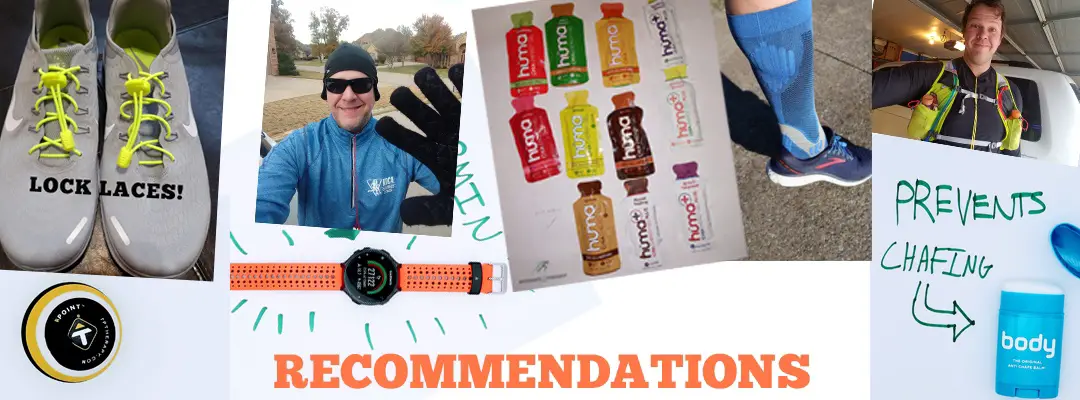If you’ve been attempting to train for a half marathon, you’re likely realizing that it’s no joke! Even if you’re in great shape and run for fun, marathons ask a lot of you. You’re expected not only to run a bit over 13 miles but to do it on a time crunch. Here are some great tips to help you absolutely crush your half marathon, from former Olympian Jeff Galloway.
What is Walk/Run?
Galloway created the idea of walk/run intervals in the ’70s. In short, these are breathers designed to help you finish long runs without injury or exhaustion. They’re especially useful for people who either don’t exercise consistently, (or at all). The thing is, though, even talented runners can benefit from this. So what exactly does this entail?
The idea of the walk/run technique lies in the fact that, at our heart, humans are endurance runners rather than short-distance runners. We’re designed to be able to continue over massive stretches of land (hence the marathon). But that doesn’t mean that we’re supposed to go full speed the whole time.
Walk/run asks something very simple of you. If you’re struggling to breathe or keep pace – take a break. Slow down and walk for a short time to catch your breath and then start running again!
What is the Main Advantage of Walk/Run?
The biggest advantage of this technique is that it allows your body a chance to catch up to you. Just because you want to keep running doesn’t mean your body can. You risk injury and unnecessary exhaustion by pushing yourself too far.
Essentially, you’re keeping your heart rate up by continuing to move, while lessening the impact on your body. This means that it’s a method that can be used by pros and newbies alike! Just listen to what your body needs, and cooperate.
Extra Benefits
For beginners, it’s an easier way to slowly transition into long-distance running, rather than jumping at full speed. If you aren’t already a runner, don’t expect runner-level stamina overnight. That’s what the walk/run technique helps you build – endurance.
It’ll also save your legs from screaming at you the next day. Even if you’re an experienced runner, this will greatly lessen the impact on your knees and ankles. You need those, so keep them strong!
Related: Do Ankle Weights Actually Help Strengthen Your Legs?
What Are the Drawbacks?
If you’re looking to get faster, this method might not work for you, for obvious reasons. As you will be walking for at least thirty seconds, you will be slowed down. This technique also encourages you to aim for lower-impact running (aka jogging) rather than a full sprint. In short, this focuses on increasing your endurance rather than speed.
Additionally, if you (like myself) have asthma, it may make running more difficult in the long term. Asthma is affected by the amount of air you’re pulling into your lungs. So by changing your breathing pattern to stop or start running, you may find difficulty catching your breath. This is why most running coaches encourage structured breathing while running.
How Should I See if This is For Me?
You can’t know if this works for you without trying it! Give yourself an objectively easy route to start with (maybe a local track?) and try to give yourself consistent moments of walking in between your run or jog.
If the next day you aren’t as sore as you thought you’d be – that’s a good sign it’s working. If you don’t notice any particular change, then you can decide for yourself if the walk/run method is for you.
What is the Best Interval Cycle for Walk/Run?
This is a tricky question, as it depends on the individual. When beginning, it’s best to start easy – that means longer walking intervals and shorter running ones. And these time frames are more of a guideline than a hard-and-fast rule, as you’ll see below.
It’s also important to note that this doesn’t mean just stopping when you’re tired. You should try to consistently stick to these timelines as much as possible.
Related: 10 Tips To Keep Running When You Feel Like Stopping
If you don’t run regularly (or at all), these times may seem insulting. But we’re trying to avoid injury here, so don’t try to convince yourself you’re an intermediate when you’re not. There’s no shame in starting small – most runners (who aren’t jerks) will tell you the same.
Beginners
If you find yourself getting tired just going upstairs, this is where to start. Try to run for 15-30 seconds, and walk for 1.5-2 minutes.
Related: Why Do I Feel Tired After I Run (besides exerting energy)?
Intermediates
If you’re simply not struggling to do the previous cycle, it’s time to move on. Once you’ve built stamina, try to run for 2-5 minutes and walk for 1-2 minutes. This is a big jump, but it leaves a bit of wiggle room for improvement.
Experts
Here’s where things get tougher. Once you’re comfortable with the previous cycles, you can start to push yourself. Try to run for 8-10 minutes with a 30-second break. If you need longer, try to keep it below 1 minute.
Related: What Is Polarized Training? Is The Mid-Run Finally Gone?
What is Walk/Run vs. Run/Walk?
They’re the same in theory, but different in practice. The idea remains, regardless of the name – you break up runs with short intervals of walking. However, the difference in practice lies in what you start and end your outing with.
If you’re walking into a run, it’s walk/run. If you start out at a run, it’s run/walk. It’s generally recommended that all people use “warm-up” and “cool-down” intervals in any run.
This means that you start and end at the same (lower than usual) pace to allow your body adjustment time. Simply going into a full run without a warmup puts you at risk for muscle strain. The same goes for stopping without giving your body time to cool off. Try to take an extra lap in which you lightly jog or walk to switch back into “normal” operation.
Related: What Is LSR In Running? Can It Improve My Running?
Do Professionals and Ultra-Marathoners Use Walk/Run?
Yes! This is a technique that was created by an Olympian, after all. Using a form of walk/run can be wildly beneficial over extreme distances – especially on iffy terrain. There are two reasons for this.
Walk/Run decreases impact on some of the most important parts of your legs. If you’re forcing yourself to run past where you’re comfortable, you’re risking muscle strain or serious injury. And that’s a real problem when you’re in hills or forests – common areas included in ultramarathons.
Planning ahead takes some risk out of the run. By starting to use walk/run intervals before you’re tired, you prevent your body from breaking down too early in the marathon. And that’s important because your body will start to break down over extreme distances.
You don’t want to get 60 miles into a 100-mile race and be unable to put weight on your knees. Being cocky about your abilities can result in serious injury, so be honest with yourself.
Related: 22 Running Tips For Absolute Beginners!
Final Thoughts
Jeff Galloway’s walk/run method is a long-standing and well-tested method to improve endurance and lessen the impact on your body. It can easily be adapted to beginner runners and ultramarathoners alike, making it highly versatile. And, most importantly, you’re less likely to have your body scream at you the next day.
| Help support me and subscribe to my YouTube channel. YouTube video - 30 ways to make your runs less painful! Coach Scott's Credentials:
|
To sign up for a FREE half marathon training schedule, log sheet, and pace predictor CLICK HERE.

Recommended gear for runners
Connect with me:
| facebook.com/BeginnerToFinisher/ |
References
https://www.runnersblueprint.com/the-run-walk-method/
https://www.active.com/running/articles/run-walk-run-to-faster-times-faster-recovery
